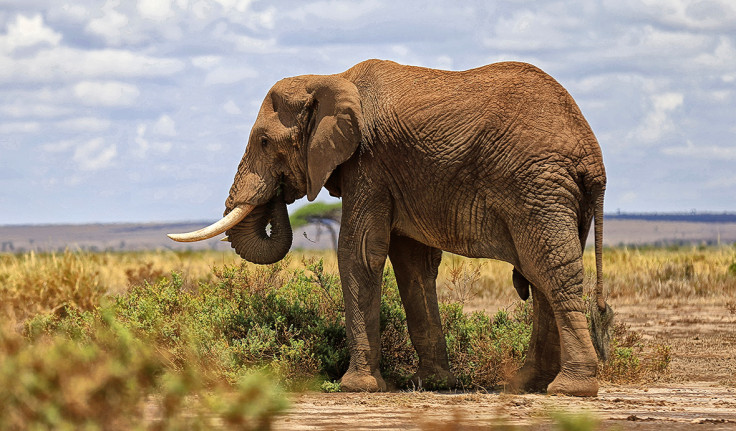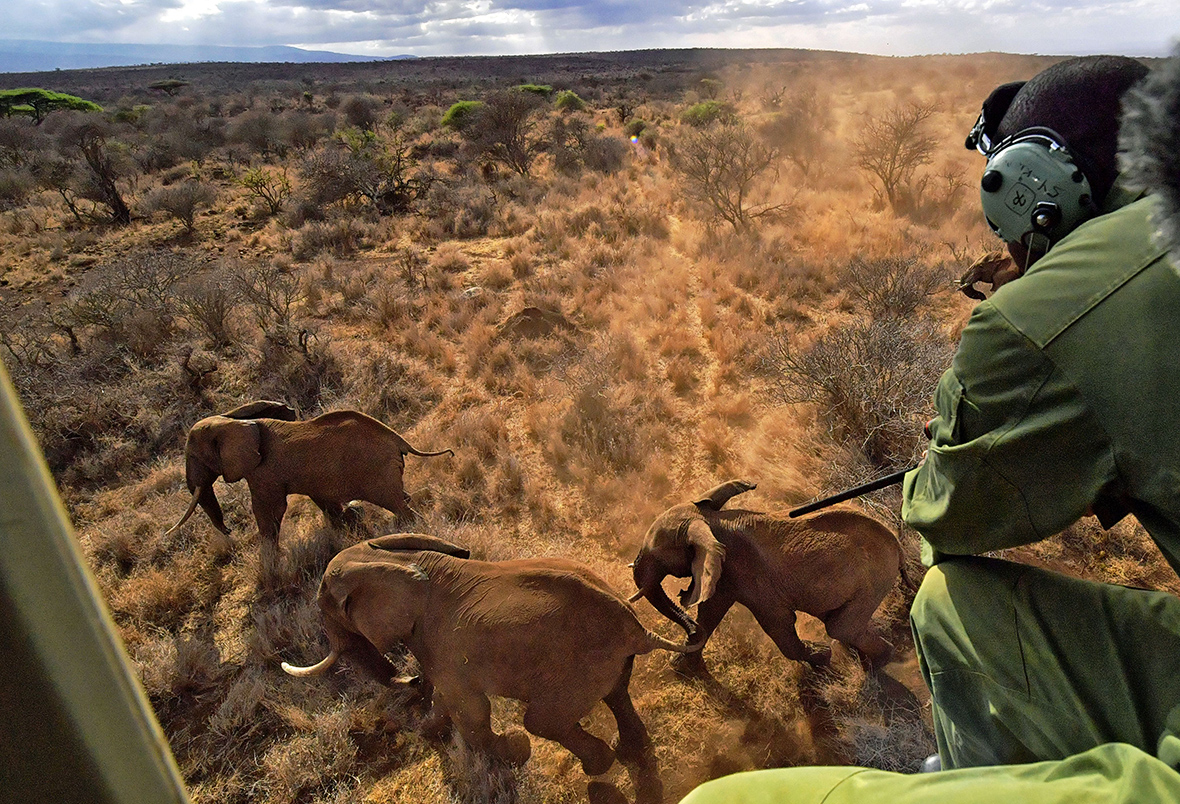Kenya's elephants are being fitted with tracking collars to prevent conflict with humans
Kenya's parks are a vital part of the country's tourism, with visitors eager to watch the wild animals in their natural habitat.
Elephants at Kenya's Amboseli National Park are being fitted with satellite radio tracking collars, in order to help secure the "corridors" they use between national parks. This is part of a conservation drive that has seen the nation's elephant population double within the last 35 years. It suggests a way for the animals and their human neighbours to live together more peacefully.

A total of 14 elephants are currently being tracked under the programme, after another two were fitted with the collars on Wednesday (2 November). The elephants were darted with tranquillizers in areas where herders were grazing livestock, underscoring the potential for conflict with humans. Many local families rely on the produce, which the elephants often raid or trample during the migration period, in order to feed their families. Collaring the elephants allows conservationist to monitor their movements. The programme is being conducted by Kenya Wildlife Service (KWS) and International Fund for Animal Welfare (IFAW).



Joseph Ole Sina, who lives near the park, was happy to witness one of the elephant bulls being collared. "I was just close by and this specific bull has been quite a nuisance to our farms and crops. It is very difficult to keep it away from our crops, it doesn't matter whether it finds something to eat or not, it just tramples on everything. We are glad they are taking this step," he told Reuters.



According to the Kenya Wildlife Service, elephant numbers have rebounded to 32,000 from a low of 16,000 recorded in 1989 – the same year that the world conservation body CITES banned sales of ivory from African elephants. "The purpose of collaring the elephant is that it will provide information on its movements in this landscape," Steve Njumbi, head of programmes in East Africa for the conservation body IFAW, told Reuters. "That information is provided to development planners, to policymakers, so that we can secure these essential corridors and dispersal areas because the elephants and our wildlife natural heritage – that is our big, big pillar for tourism – and we want to save both," he added.


Conservationists used a combination of helicopters, 4x4 vehicles and elders from the local Masaai tribe to track the elephants across the grass savannah. Kenya's parks are a vital part of the country's tourism, with visitors eager to watch the wild animals in their natural habitat.




© Copyright IBTimes 2025. All rights reserved.






















